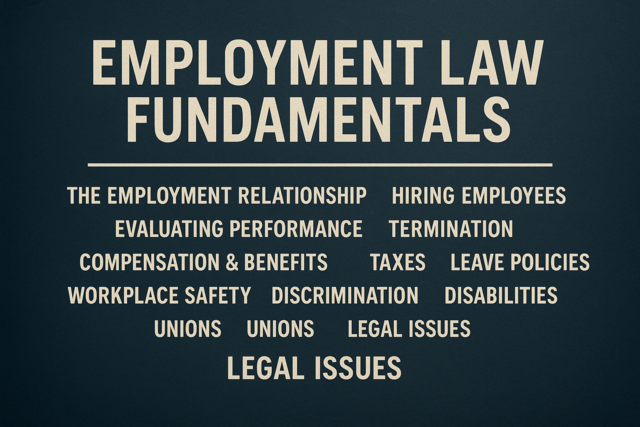Welcome to this article on a readiness and response overview to prevent workplace violence. The information in this article could help you prevent such violence or survive it if it happens so let's get started.
Introduction
Let's begin by reminding ourselves that workplace violence is a complex issue. It is receiving more and more attention from the media, public, law enforcement, and mental health professionals. We are looking at a range of activities that include those that are in the workplace involving:
-
Violence of any kind
-
Threats of violence
-
Damage to property
-
Inducing a sense of fear
-
Harassment and intimidation
-
Bullying and stalking
-
Domestic violence
-
Homicide
We have seen mass shootings at a workplace throughout the years so public awareness is growing. Data also shows that non fatal workplace violence is more prevalent than once reported.
What we can do about prevention
Groups around the United States and world have developed programs to minimize and prevent workplace violence. These programs can help minimize threats and neutralize them. We have no way to predict workplace violence but data shows that certain actions can reduce incidents.
Data shows that typically workplace violence happens not at random but due to planned actions.
Typically, there are warning signs that someone is planning an act of workplace violence. If we learn about these indicators and implement a plan of action you can neutralize a potentially violent situation. You can put into place a program of prevention of workplace violence.
Here are some of the behaviors that can be disturbing and a sign that someone could possibly be planning workplace violence. Note if a:
-
coworker's actions change � see how it changes
-
coworker appears sad, depressed, or aggressive
-
coworker threatens those in the office or shows menacing and erratic behavior
-
coworker refers to weaponry or uses verbal abuse
-
coworker cannot handle criticism
If someone is hypersensitive, jokes about violence, and makes offensive comments, these could be warning signs. If a downturn in productivity also happens and the worker is often absent or late, this could show additional signs. Poor relations with other workers and management could also show a potential for violence. None of these signs points directly and absolutely to workplace violence, but you should not ignore them.
We can also see that problems in someone's personal life can be brought into the workplace.
These problems could include:
-
Divorce
-
Relationship problems
-
Emotional abuse at home
-
Physical abuse at home
-
Separation
These are some of the signs that a person is experiencing problems in their personal life.
-
Disruptive calls and emails
-
Poor concentration
-
Anxiety
-
Unexplained bruises and injuries
-
Frequent tardiness and absence
-
Unplanned personal time
-
Disturbing visits from a former or current partner
Be careful when you deal with someone who shows these symptoms. In some cases, an organization can use the help of a consultant or expert to help.
What intervention is possible
When you develop a strategy to minimize workplace violence you should consider both action points and flash points. Here are factors to consider.
- Action points occur when you realize that a worker could be planning to commit an act of workplace violence. You take action to prevent this.
- Action points give you a chance to intervene before danger becomes reality.
If you establish action points as early as can be, this can prevent behavior that you cannot predict and that could turn toward violence.
When you identify an action point you can then intervene. Here are some of the ways you can intervene.
1. Talk with the person. See if everything is ok in their life.
2. Let people vent. Let them talk about life situations. This can release tension.
3. Use this approach carefully.
4. Report about disturbing behavior to supervisors
5. Report about disturbing behavior to human resources and security departments.
6. Report about disturbing behavior to an employee assistance program or ombudsman.
Some organizations have a way to communicate concern via text message or email, a drop box, and tip line. Ethics hotlines are another option. You can maintain anonymity this way. This will work for someone who is not able to approach someone directly.
We should also point out that one approach does not fit all cases. Here are situations that could use a different approach in each case.
- Perpetrator has a motive of a robbery or other kind of crime. Perpetrator is not related to the organization or victims.
- Perpetrator is a client, contractor, patient, student, or has a relationship with the organization.
- Perpetrator wants the victim to be a coworker, supervisor, or manager and is a former or current employee
- Perpetrator has a relationship with an employee and is not an employee and domestic violence could be a factor
What is a flash point? That is when the violence occurs in the workplace. It is too late to take preventive measure. After a flash point we learn that coworkers had concern about the perpetrator and did not report about this. Here are some factors to consider.
-
Experts advise groups � say something if you see something.
-
Employees do not want to undermine coworkers.
-
Employees may say something when it is too late
Awareness will help intervention be effective. Training will cause awareness to grow. This way employees can report on disturbing behavior. Prevention and action could help and are a good approach to preventing workplace violence. If you are aware and act accordingly the workplace can become a safer place and workplace violence will be be stopped or minimized.
Surviving an incident
We just covered strategies for prevention and intervention of workplace violence. Let's look now at a related topic. Let's look at how planning and preparation for such an incident can help a group. In addition, let's look at the ways that know how to respond when an incident occurs can also help. Planning and preparation for response can help with survival of an incidents. It can help to be, for example, specific about an incidence of active shooting and an instance of hostage taking. Let's see how.
Taking on a survivor way of thinking can help. With this way of thinking, you realize law enforcement may not be there to help you. You could be on your own and responsible for your own survival. You must be ready physically and mentally for the worst. This could help you survive an act of workplace violence.
For an active shooting incident, if you have a survival mentality and approach, you should be aware, prepared, and have practiced. This will help you survive a workplace shooting incident. With awareness you understand that workplace violence can hurt anyone. It can be any industry and at any level of an organization. You can recognize possible disturbing behavior be it subtle like profanity or more obvious like seeing a gun.
If you are trained you can be startled and anxious then you recall what you are to do, prepare for it, and act. If you are not trained you are likely to be startled then feel panic and disbelief, denial, and helplessness. Training can make the difference in surviving.
Preparation is also a component of a survival mentality. This means:
1. Employees think about their own security and safety.
2. They look at their work environment to ask what if.
3. Employees think about what to do if as shooter is in their organization's lobby or hall.
4. They plan and become prepared for and incidence of workplace violence.
Rehearsing is another part of the survival mentality. This is where you:
1. Imagine walking through the workplace looking at hiding places and exits.
2. This makes a worker able to the stress of a workplace violence.
3. This can reduce response time for a worker during an incidence of workplace violence.
4. This gives a worker confidence and able to survive and incident of workplace violence.
Rehearsing for an incidence of workplace violence is similar to rehearsing with a fire drill. During the real thing your chance of survival improves if you have rehearsed.
How to respond
If you are trained you respond differently to an incidence of workplace violence than someone who is not trained. If trained you experience fear, then recall and act. If untrained you experience fear, panic, disbelief, and helplessness. Training greatly improves the chances of surviving an incidence of workplace violence.
If you are in an incident with someone shooting, here is a way to respond.
1. Figure out what is happening and accept it.
2. Assess the situation.
3. Look at options for survival.
4. Consider evacuating the building.
5. Consider hiding.
6. Continuously reassess options.
If someone realizes that escape is the best option, they should leave a soon as possible, not wait for the ok from someone, and not wait to collect anything from their office. Once they are safe they should:
1. Contact emergency personnel
2. Realize that no one may have called authorities
3. Relay to an emergency operator a description of the perpetrator, location of the perpetrator, types of weapons, and number of people in the building.
If a worker feels escape is not a good option here are other actions the worker can take.
1. Find a hiding place as this can save your life
2. Lock yourself in an office space, barricade the door, and remain quiet.
3. Disperse so it is harder to find everyone.
4. Stay in communication with other workers and help the injured as possible.
If you cannot hide or escape from danger as a way to survive, these may not be options. If the shooter confronts a worker:
1. Be prepared to know what you must do.
2. Attempt to neutralize the shooter to survive.
This is what someone with a survival mentality will have to do. You accept what you have to do. You commit to do what you must to live.
A look at two dangerous situations
To survive an incident of workplace violence you must remain realistic and practical. For example, if it is a incidence of a shooting or taking of hostages � knowing the difference of how to react will help you survive. Here are some differences in the description of the perpetrator.
- Hostage takers may have a weapon. Their motivation could be to get money, change of some sort, or some other goal. Instead, their motivation could be in reaction to losing a job or a relationship and what they want may not be clear. They are contained in the same space as the hostages. Hurting a hostage may not help the hostage taker.
- Shooters have a weapon they use to shoot in the workplace. They are not contained in the way that a hostage taker is contained. Targets could be specific or random.
If you are held captive, consider that law enforcement may not arrive in time to help you. With this in mind you should:
1. Have patience as you will need to survive
2. Remain calm
3. Follow directions
4. Do not argue
5. Do not irritate the hostage taker
6. Do not be too assertive or too passive
If law enforcement cannot negotiate effectively with the hostage taker, they may shoot. If this happens someone who is held captive should:
1. Help law enforcement
2. Identify the perpetrator if that will help
3. Raise your arms if asked to do so by law enforcement
4. Spread fingers if law enforcement asks you to and drop to the floor
5. Do whatever law enforcement asks you to show you have no weapons
6. Relay any information asked by law enforcement
7. Indicate how many shooters there are and what is the location of the shooting
8. Identify the weapons used
Parting thoughts
Workplace violence is a complex problem that can exist in virtually any workplace location. We see the media cover incidents so the public is aware of many high profile events. Others go unreported. You should know that to help cope with workplace violence you should learn about disturbing behaviors and become more aware of what might happen and how you should react.
Know, for example, your reaction to a hostage taking event at your workplace could be different than your reaction to a shooting incident. If you are aware and prepared and take the right action you could prevent an event and survive it if it happens.
A quick review
We have looked in this article at issues involving readiness and response to preventing workplace violence and how to deal with it if it happens. We hope the information in this article could help you prevent such violence or survive it if unfortunately it happens.





























